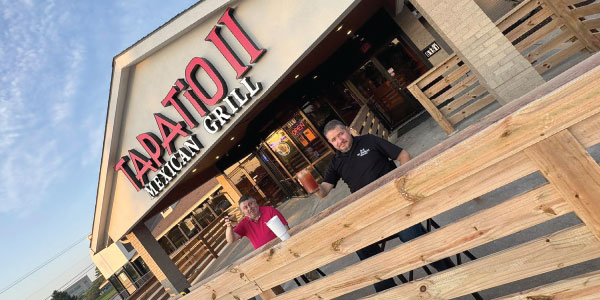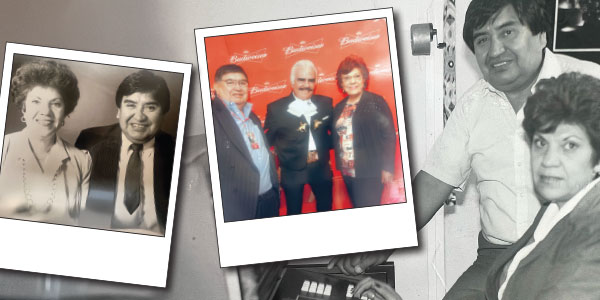
By Dra. Nancy Álvarez
The man-woman couple relationship has evolved and changed like every living being. The couple is a different entity from the two sides that are part of it. It grows and evolves, going through three stages. Look around you and you’ll find many couples that have stayed in the first stage.
Traditional stage
Very common among older people, although sadly, there are still young people who think like that.
The man is the expert and provider who interacts with the “external world.” It is that machismo that everyone talks about. This man does not know how to express affection; he is not tender or sweet. Deep down, he is a weak man who needs to keep his woman under his control so as not to feel insecure and threatened by her.
The woman is passive, calm and subdued. The first thing for her is to be a mother and a wife. She knows how to give affection, support and emotional security. Her world is the house, the kids, food and family. Working, earning money and sharing these tasks scare her because she’s not prepared for that.
In this situation, it is hard to develop a ‘we.’ They are not two complete beings, and each of them expects the other give them what they don’t have. This is one of the patterns that are often treated in couples counseling.
Couple in transition:
This is the second stage of the evolution.
This woman already knows there is a world “out there” that is not the house and the kids. She has prepared and studied and accepts her “masculine” side. She goes beyond her roles of mother and wife. She finds the power and satisfaction of having a career and a job.
The man accepts and discovers his “feminine” side, which means that he understands he can be gentle, understanding, receptive and sensitive. This leads him to be a companion (for the woman) and to nourish others emotionally.
Both man and woman feel disoriented, lost and insecure. She complains that he is too “soft” and sensitive, and that she no longer feels protected, and he complains of her independence, of her excessive confidence and accuses her of being dominant.
Couple of the future:
This is the solution to the drama of a man-woman relationship.
It is characterized by the development of both the man and the woman into their full potential. A complete man marries a complete woman. Behind is left the famous “half orange”, and the man mutilated of feelings and affections that this society gives us to make way for the complete man, with his masculine and “feminine” sides working to full capacity.
The same thing should happen with the woman. She can no longer be the passive housewife who doesn’t know how to defend herself or how to fight for her beliefs and goals.
The sensitive and firm man accepts and works with his vulnerability, in the same way as with his courage and thinks of the woman as his equal.
The woman, on her part, should see herself as a sensitive woman but should be conscious of her freedom and of alternatives for her continuous personal development.
Las tres etapas de la pareja
La relación de pareja hombre-mujer ha ido evolucionando y cambiando como todo ser vivo. La pareja es un ente diferente a las dos partes que la conforman. Crece y cambia, pasando por tres etapas. Mira a tu alrededor y encontrarás muchas parejas que se han quedado en la primera etapa.
Etapa tradicional
Muy común entre personas de más edad, aunque tristemente existen jóvenes que piensan así.
El hombre es el experto y proveedor que se relaciona con “el mundo externo”. Es el machismo del que tanto se habla. No sabe manejar afectos, no es tierno, ni dulce. En el fondo es un hombre débil, necesita mantener a su mujer bajo el yugo para no sentirse inseguro y amenazado por ella.
La mujer es pasiva, tranquila y sometida. Lo primero para ella es ser madre y esposa. Lo que sabe proveer es afecto, apoyo y seguridad emocional. Su mundo es la casa, los niños, la comida y la familia. Trabajar, ganar dinero y compartir en esos campos la asusta porque no está preparada para eso.
En esta situación es muy difícil desarrollar un nosotros. No son dos seres completos y cada uno espera que el otro le dé lo que no tiene y que sólo se lo puede dar sí mismo. Este es uno de los patrones que a menudo se trata en terapia de parejas.
Pareja en transición:
Es la segunda etapa de evolución.
Esta mujer ya sabe que existe un mundo “allá fuera” que no es el de la casa y los niños. Se ha preparado y estudiado y acepta su parte “masculina”. Se va más allá de sus roles de madre y esposa. Descubre el poder y las satisfacciones que dan una carrera, un trabajo.
El hombre acepta y descubre su parte “femenina”, es decir, entiende que puede ser gentil, comprensivo, receptivo y sensible. Esto lo lleva a ser compañero y a nutrir afectivamente a otros.
Ambos se sienten desorientados, perdidos e inseguros. Ella se queja de que él se ha tornado demasiado “blandito” y sensible y que ya no se siente protegida, y él de la independencia de la mujer, de su seguridad excesiva y la acusa de ser dominante.
Pareja del futuro:
Es la solución al drama de la relación hombre-mujer.
Se caracteriza por el desarrollo del hombre y la mujer a su máxima expresión. Un hombre completo se casa con una mujer completa. Queda atrás la famosa media naranja, y el hombre mutilado de sentimientos y afectos que nos da esta sociedad para dar paso al hombre completo, con su parte masculina y “femenina” funcionando a todo dar.
Lo mismo debe pasar con la mujer. Ya no puede ser la pasiva ama de casa que no sabe defenderse, ni luchar por sus creencias y metas.
El hombre sensible y firme acepta y trabaja con su vulnerabilidad, así como con su coraje y en relación de igualdad con la mujer.
Ella, por su lado, puede verse como una mujer sensible pero consciente de su libertad y alternativas para su continuo desarrollo personal.
www.nancyalvarez.com
Tienda: https://tienda.nancyalvarez.com
FB: DraNancyAlvarez
Twitter: @dranancyalvarez
Instagram: dranancyalvarez
Youtube: nancyalvarez51










